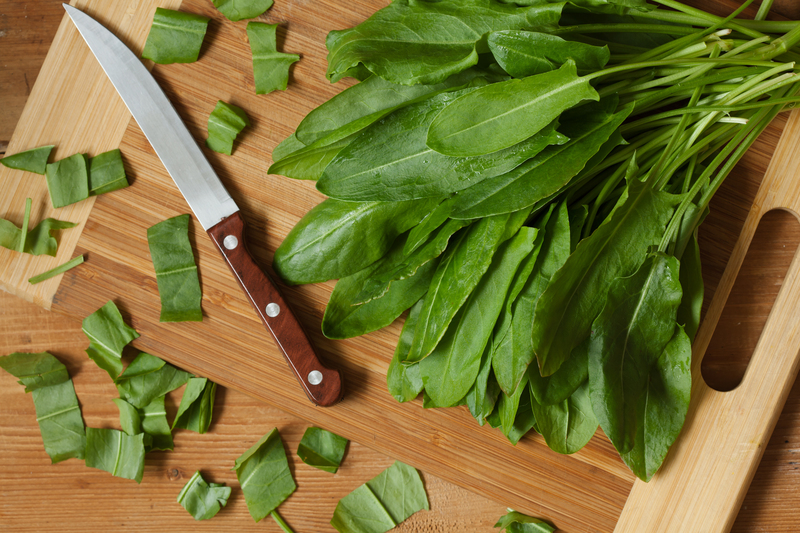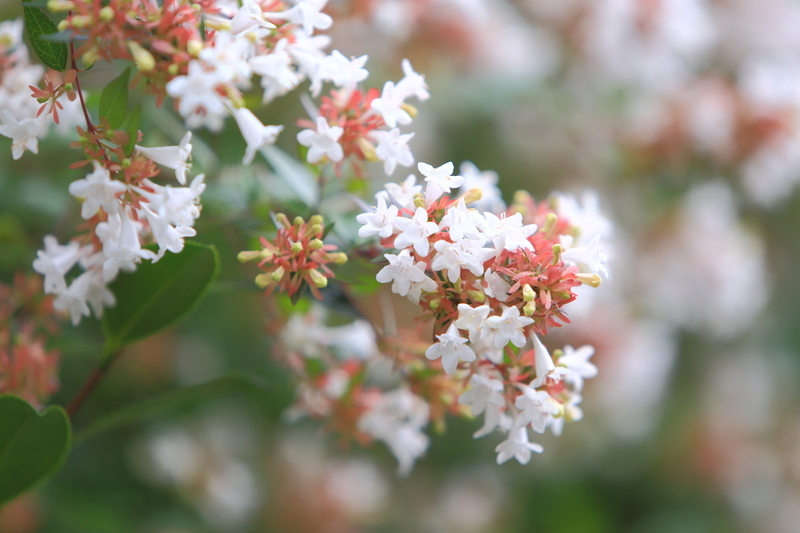Essential Techniques for Stunning Hedge Designs
Posted on 10/09/2025
Essential Techniques for Stunning Hedge Designs
A beautifully designed hedge can serve as a living masterpiece in your landscape, offering privacy, structure, and curb appeal. To create attractive, long-lasting hedge designs, it's crucial to utilize proven techniques that combine plant knowledge, creative vision, and regular upkeep. This comprehensive guide explores the essential techniques for stunning hedge designs to help you craft outdoor spaces that truly captivate the eye.

Why Invest in Professional Hedge Design?
Before delving into the techniques, let's address: Why is hedge design so important in landscaping? Hedges aren't just boundaries--they provide texture, year-round greenery, wildlife habitats, and even noise reduction. Stunning hedge designs enhance property value and give structure to gardens. Whether you favor tidy lines or whimsical shapes, mastering the essential methods ensures your landscape truly shines.
Choosing the Right Plants for Your Hedge
The journey to stunning hedge designs starts with plant selection. Different species offer unique foliage, growth habits, color, and care requirements. Consider these key points when selecting hedge plants:
- Climate Compatibility: Choose plants that thrive in your USDA Hardiness Zone or regional climate.
- Growth Rate: For quick privacy, opt for fast-growing shrubs; for detailing, slow growers allow for more creativity and control.
- Foliage Density: Dense evergreens like boxwood, yew, or privet are ideal for formal designs, while loose deciduous shrubs suit naturalistic looks.
- Color & Texture: Variegated and colorful species such as euonymus or photinia provide visual interest beyond plain green.
- Height & Width: Always check the mature size of your chosen hedge species to prevent overcrowding or excessive pruning.
Top Choices for Stunning Hedges
- Boxwood (Buxus spp.): Classic for formal, low hedges
- Yew (Taxus spp.): Versatile, dense, easy to shape
- Privet (Ligustrum spp.): Fast-growing, great for privacy
- Laurel (Prunus laurocerasus): Glossy leaves, robust and lush
- Beech (Fagus sylvatica): Deciduous, but keeps leaves for winter interest
- Holly (Ilex spp.): Evergreen, spiky for security value
Planning Your Hedge Layout
Strategic planning is the backbone of eye-catching hedge arrangements. Before you plant, spend time mapping out the hedge's path. Good design leverages curves, angles, and layers to maximize visual drama.
Layout Techniques for Beautiful Hedging
- Follow Existing Features: Align hedges with walkways, fences, or house lines for a harmonious landscape flow.
- Incorporate Curves and Waves: Subtle curves soften garden lines and add elegance, while waves can evoke a modern or playful vibe.
- Vary the Height: Stagger hedge heights to frame views or highlight focal points, such as statues or flower beds.
- Combine with Hardscape: Blending hedges with walls, edging, or paving stones creates a balanced, sophisticated aesthetic.
- Double or Layered Rows: Planting a secondary row--either in front or behind--gives depth and permits mixing colors and textures.
Tip: Always consider growth rates and mature sizes when spacing your hedge plants. Crowded roots can lead to disease or stunted growth, while too much space leaves unsightly gaps for years.
Soil Preparation & Planting Techniques
No matter your design aspirations, healthy hedges require excellent soil preparation. Begin by clearing sod, debris, and weeds from the intended area, then loosen the ground thoroughly--most hedges thrive with at least a 12-inch-deep, 18-inch-wide trench.
Steps for Ideal Soil Prep
- Test Soil pH: Most hedges prefer a neutral to slightly acidic pH (between 6.0 and 7.0). Amend accordingly.
- Improve Drainage: Work compost or well-rotted manure into the soil. In heavy clay, add coarse sand or grit for better drainage.
- Fertilize Before Planting: Use a balanced, slow-release fertilizer to jumpstart healthy root development.
- Site Your Plants: Space them according to mature width for even, full growth.
Once prepared, set plants at the correct depth (matching the soil in the container) and water thoroughly. Mulch around the base to retain moisture and suppress weeds.
Pruning & Trimming for Stunning Hedge Designs
Regular pruning is the cornerstone of stunning hedge designs. Proper trimming not only shapes the hedge but also stimulates thick, healthy growth and prevents disease. Depending on your plant choice and desired formality, the frequency and style of pruning may vary.
Formal Hedge Pruning
- Tools: Use sharp, quality hedge shears for straight lines or topiary, and secateurs for detail work.
- Frequency: Prune boxwoods and privets 2-4 times annually during the growing season; slow growers like yew need less.
- Shape: Always trim hedges so the base is slightly wider than the top ("trapezoid shape")--this maximizes sunlight and prevents lower leaf loss.
- Timing: Avoid pruning in late fall, as new growth may not harden off before winter freezes.
Informal Hedges & Naturalistic Designs
- Selective Pruning: Prune lightly, focusing on removing dead or crossing branches.
- Shaping: Encourage irregular, flowing forms for a softer landscape look.
Pro Tip: For stunning hedge shapes, use taut string lines or wooden guides to achieve symmetry. For topiary, consider wire frames to train young branches.
Contemporary Design Ideas for Hedges
Modern landscapes often reimagine hedges as sculptural or architectural features. Explore these design ideas for a chic update:
- Geometric Forms: Try cubic, spherical, or even pyramidal shapes for a striking visual statement.
- Green Walls: Use trained espaliers or vertical hedges to create living privacy screens.
- Multi-Species Hedges: Alternate plants with contrasting colors or textures to form "patchwork" or rainbow hedges.
- Maze and Patterns: Create labyrinths or repeating designs for interactive garden spaces.
Innovative hedge design is limited only by your imagination--and proper plant management!
Seasonal Care & Hedge Maintenance
To maintain stunning hedge arrangements year-round, ongoing care is essential. Here's how to keep your hedges lush and healthy in every season:
- Spring: Feed with slow-release fertilizer and prune for shaping as new growth emerges.
- Summer: Water deeply during dry spells, mulch to conserve moisture, and check for pests.
- Fall: Remove debris and lightly trim to tidy the outline--avoid heavy pruning before frost.
- Winter: Brush off heavy snow to prevent branch breakage and check for signs of winter burn.
Common Hedge Problems and Solutions
- Patchy Growth: Address soil compaction, underwatering, or insufficient sunlight.
- Pest Infestations: Monitor for scale, spider mites, or aphids; treat promptly with horticultural oil or organic insecticides.
- Diseases: Prune away affected stems and enhance air circulation to combat fungal issues.
Eco-Friendly and Wildlife-Friendly Hedge Design
Today's stunning hedge designs are as much about sustainability as aesthetics. Consider choices that create valuable habitat and benefit your local ecosystem.
- Native Species: Choose locally adapted shrubs that thrive without excessive fertilizers or pesticides.
- Berry-Bearing Hedges: Holly, hawthorn, and serviceberry feed birds in winter.
- Layered Planting: Combine tall hedges with understory shrubs and groundcovers for a biodiverse hedge row.
- Leave Some Wild: Allow small sections to flower or fruit for pollinators and beneficial insects.

Frequently Asked Questions About Hedge Design Techniques
How close should I plant hedge shrubs?
Spacing generally depends on mature width--typically, plant hedges one-third to one-half of the plant's mature width apart. For example, if a species grows 4 feet wide, plant 1.5 to 2 feet apart. This ensures quick fill-in without overcrowding.
How soon will my hedge look mature?
With good care, fast-growing species like privet or laurel can create a functional screen within 2-3 years. Slow-growers (like boxwood) may need 5-7 years to reach full effect.
Can I grow a decorative hedge in containers?
Yes! Dwarf species like boxwood can be grown in large, deep containers for stunning patio or entryway hedge designs, provided you water and feed them consistently.
Conclusion: Achieving Beautiful Hedge Designs
Whether you're aiming for stately formality or lush naturalism, applying these essential techniques for stunning hedge designs will elevate your garden to a new level. By choosing the right plants, meticulously planning your layout, nurturing your soil, and pruning with precision, you can create living works of art that delight through every season. Don't hesitate to experiment with bold shapes, layered plantings, and wildlife-friendly varieties--the only limit is your imagination!
Ready to transform your landscape? Start today with these proven hedge design strategies and enjoy a thriving, stylish outdoor sanctuary for years to come.

